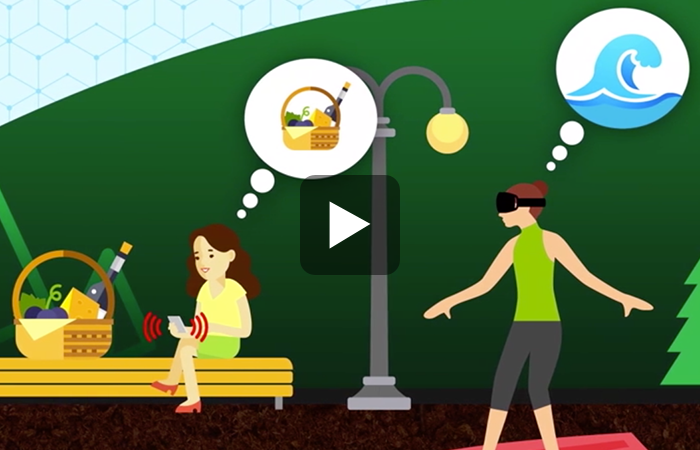Wireless technology has made extraordinary advances in just four decades to the point where we are now on the verge of 5G – the fifth generation – of wireless communications. The Communications Research Centre (CRC), the Government of Canada's primary advanced telecommunications research facility, is focused on bringing 5G to Canada so that Canadians can benefit from advanced telecommunications systems, technologies and applications.
The first generation of wireless technology – 1G – in the early 1980s introduced us to wireless telephones (mobile communications). These phones were only for talking and had almost no capacity to transmit data. They existed alongside other wireless technologies but these technologies weren't able to connect or "talk" to each other.
2G – the second generation – launched in the early 1990s, saw better sound quality, better security and more capacity for our mobile phones. Services such as email and text messaging came on stream. Consumers started swapping their pagers for mobile phones because they could now send text messages directly to another person.
3G networks brought us higher-speed transmissions, multimedia access and global roaming. In other words, wireless phones could stay connected in more places and over greater distances.
4G has introduced new apps and services as connectivity to the Internet has become faster and cheaper. 4G has allowed us to send data, surf the Internet, watch, post and send videos, listen to live streamed music, access social media and many other applications on our smartphones.
5G will be a game changer in wireless telecommunications, ushering in a network for future generations with more devices, faster communication, and higher speeds.
"Imagine it's Canada Day," says Doris Camire, a director of research with the CRC. "Everybody is downtown for the festivities on Parliament Hill, and they want to use their cell phones to send pictures or videos, and FaceTime with friends and family. That requires a lot of data. Everyone is trying to connect at the same time, but you can't get a signal because there is not enough capacity in the network."
5G will address that through advances in three important areas: connectivity, latency and bandwidth.
Connectivity refers to the number of devices that can communicate with each other. There are already more than five billion devices making us more connected than ever. But by 2020 that number is expected to reach 50 to 100 billion devices worldwide. Today's devices – smartphones, for example – are mainly used by people communicating with other people. With 5G, devices and machines will increasingly talk directly to each other. This is known as the Internet of Things, which refers to the connection of objects to the Internet and to each other. A good existing example of this is the thermostat for your house or cottage connected to WiFi so that you can adjust the heat or the air conditioning even when you aren't physically there.
Latency or response time refers to how long it takes for one device to send a package of information to another across the network – the time it takes between sending and receiving. With 4G, latency is about 50 milliseconds. To understand how fast that is, the average blink of an eye takes 0.1 to 0.4 seconds, or 100 to 400 milliseconds. 5G will reduce how long it takes to send information via wireless transmission to about one millisecond, or one thousandth of a second.
To understand why this is important, consider driverless cars. They will need this fast response time to make literally split-second decisions. For example, you could be cruising along the highway in your driverless car when just up ahead, an accident occurs. 5G sensors along the road would instantly transmit that information to your car, which would transmit to the car behind you, and so on, alerting each car to the danger ahead and potentially avoiding another accident or a multi-vehicle pileup.
More Bandwidth for 5G will allow very high downloading speeds for new applications such as 3D 360-degree-view video streaming. The classroom experience will be transformed, more realistic, immersive and interactive because headsets will be mobile, not plugged in to a computer. Learning a new language will take place by conversing with fellow students within virtual settings. History will be studied by virtually wandering the streets of an ancient civilisation.
5G will be an entirely new, flexible network that will interface with all existing and evolving generations of wireless technology to come. It will be faster, more flexible and will allow billions of new devices to be connected to each other. The CRC's Grand Challenges research projects, on understanding how spectrum is used, enabling smarter and more innovative means to access existing spectrum resources, and expanding our wireless capacity will help Canada be a world leader in 5G.
Contact us to learn more about our research on 5G, and other Grand Challenges research projects and collaboration opportunities.

